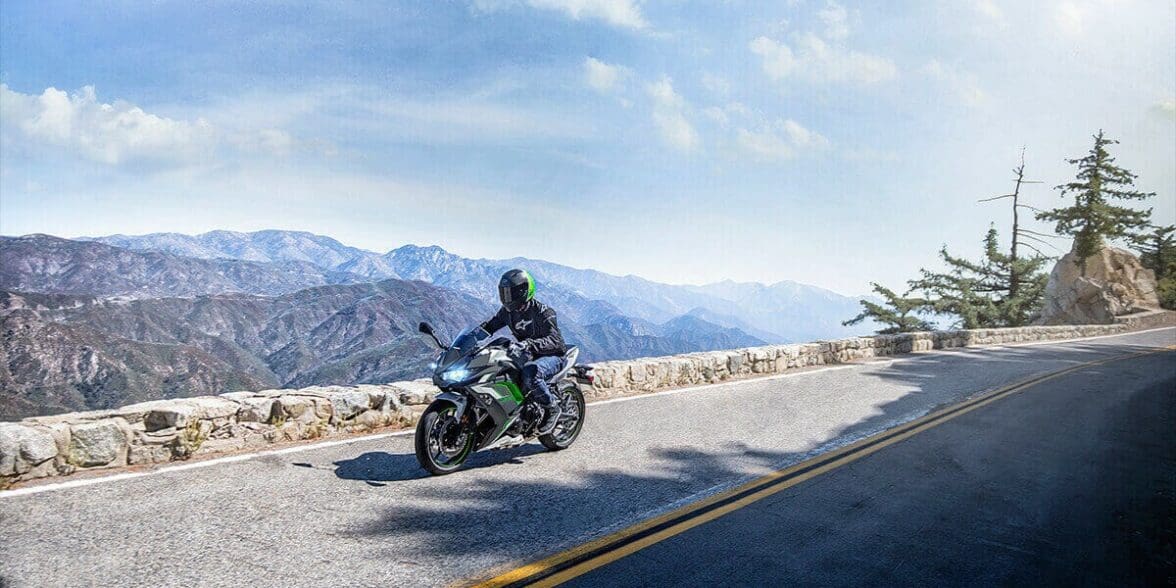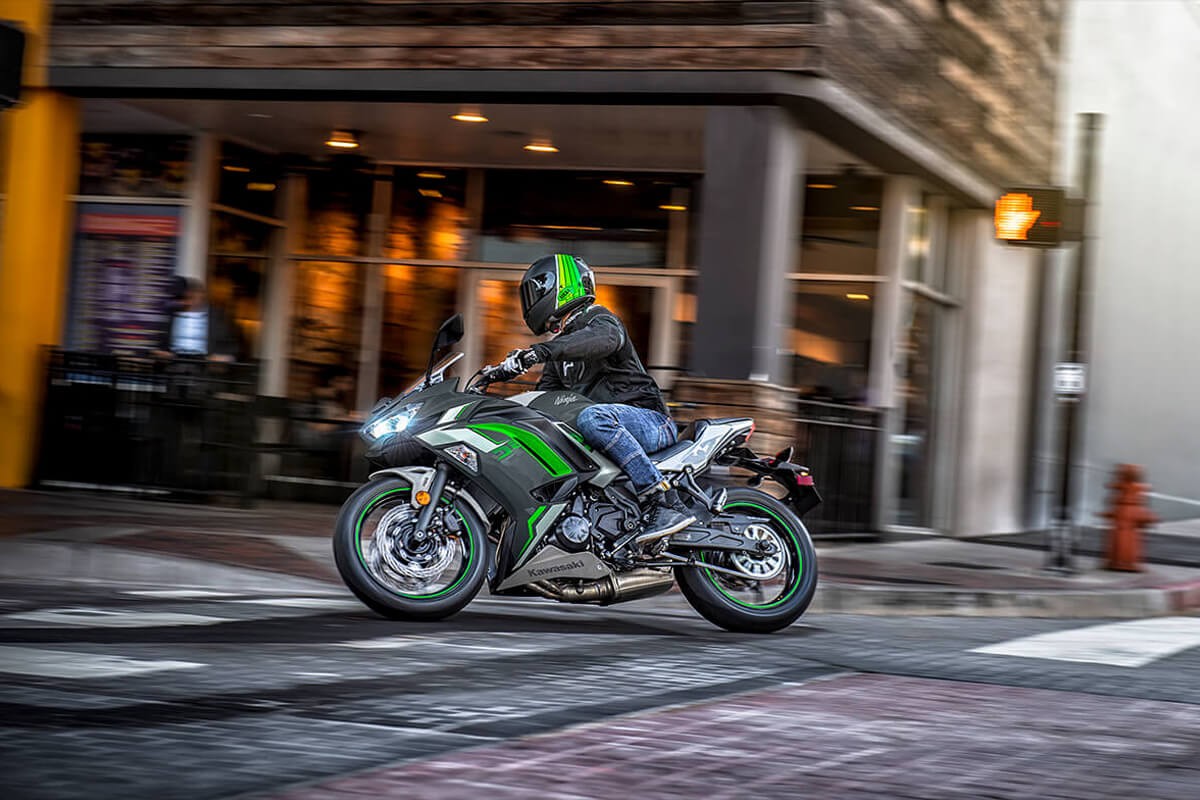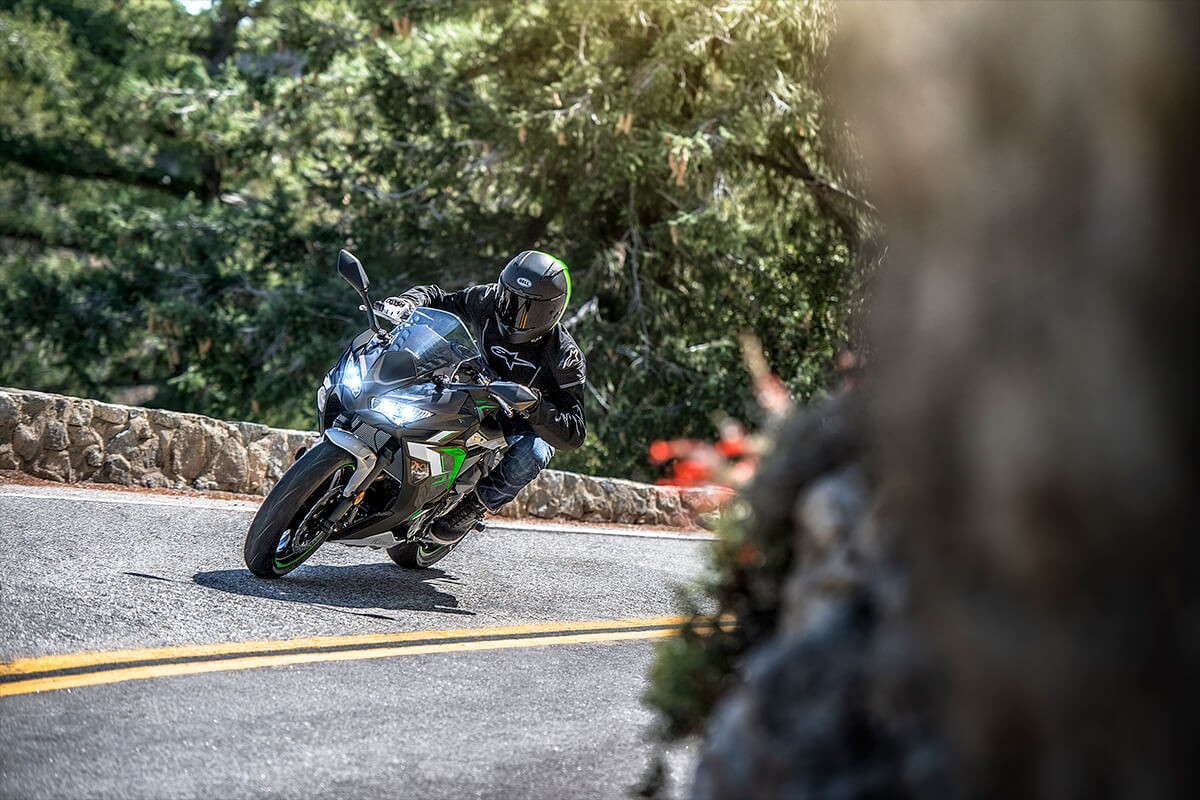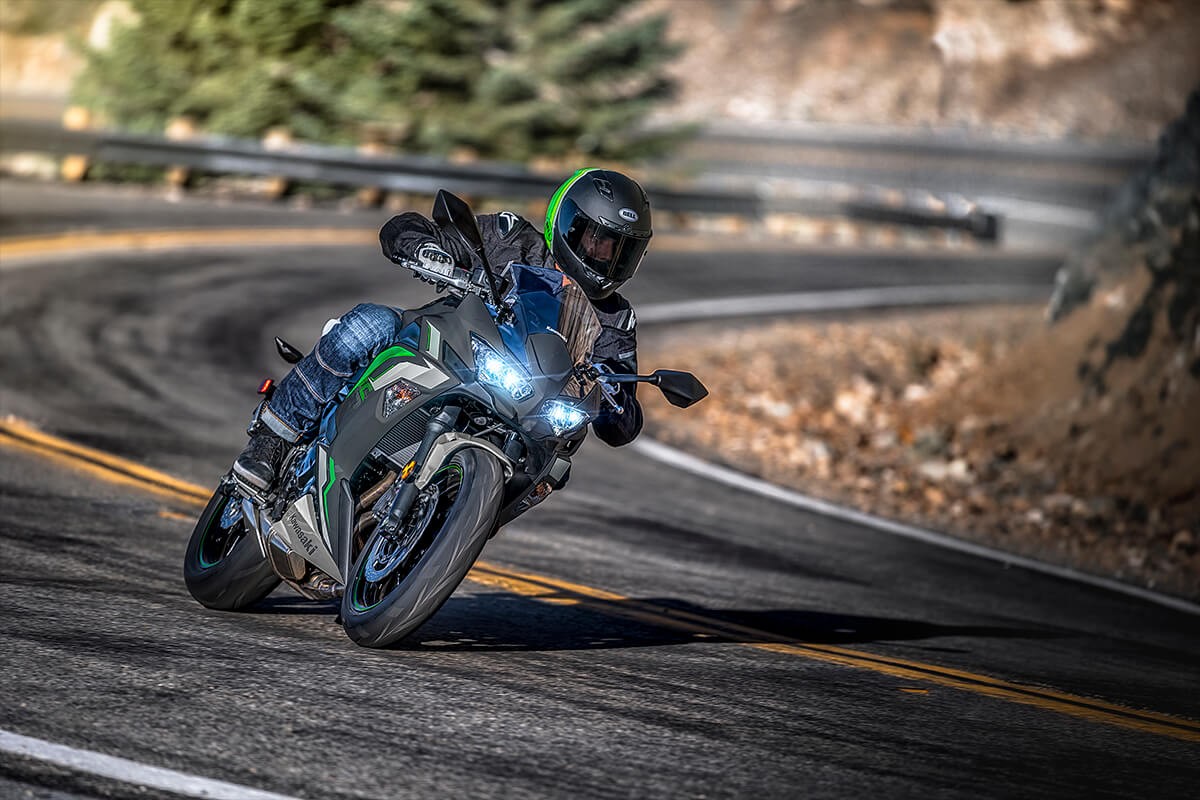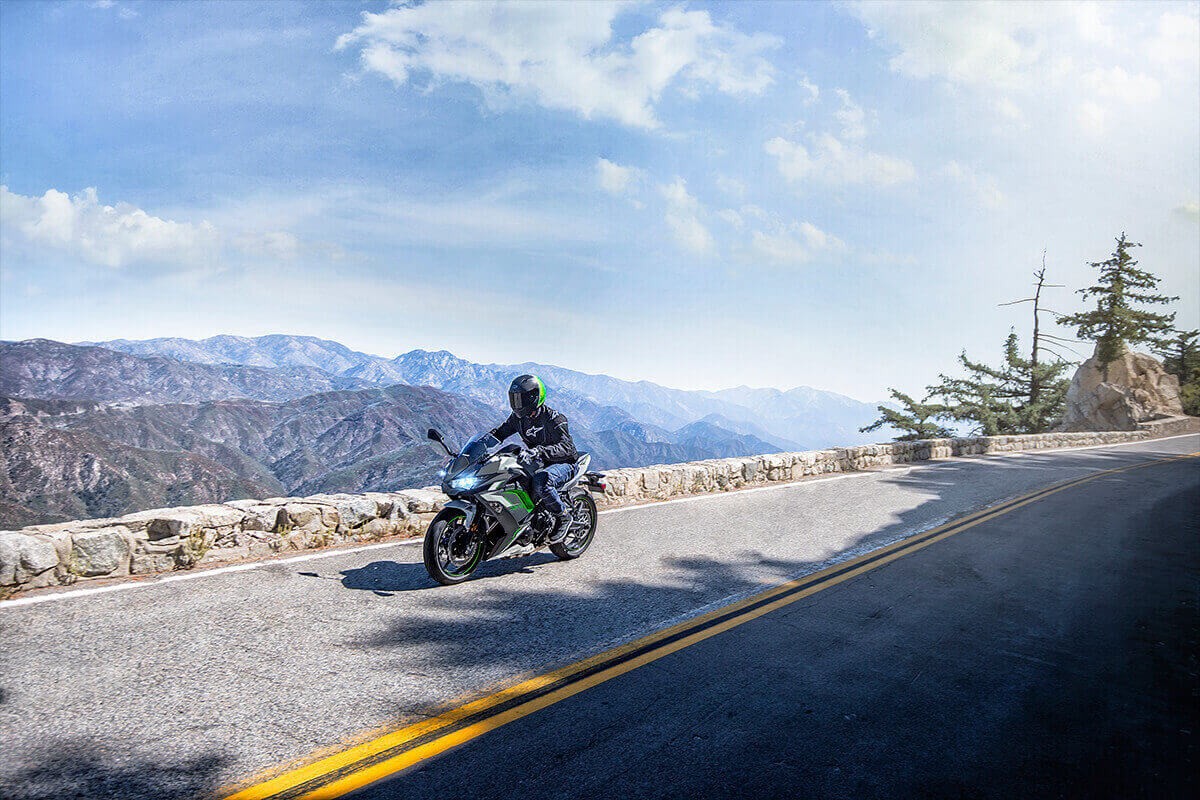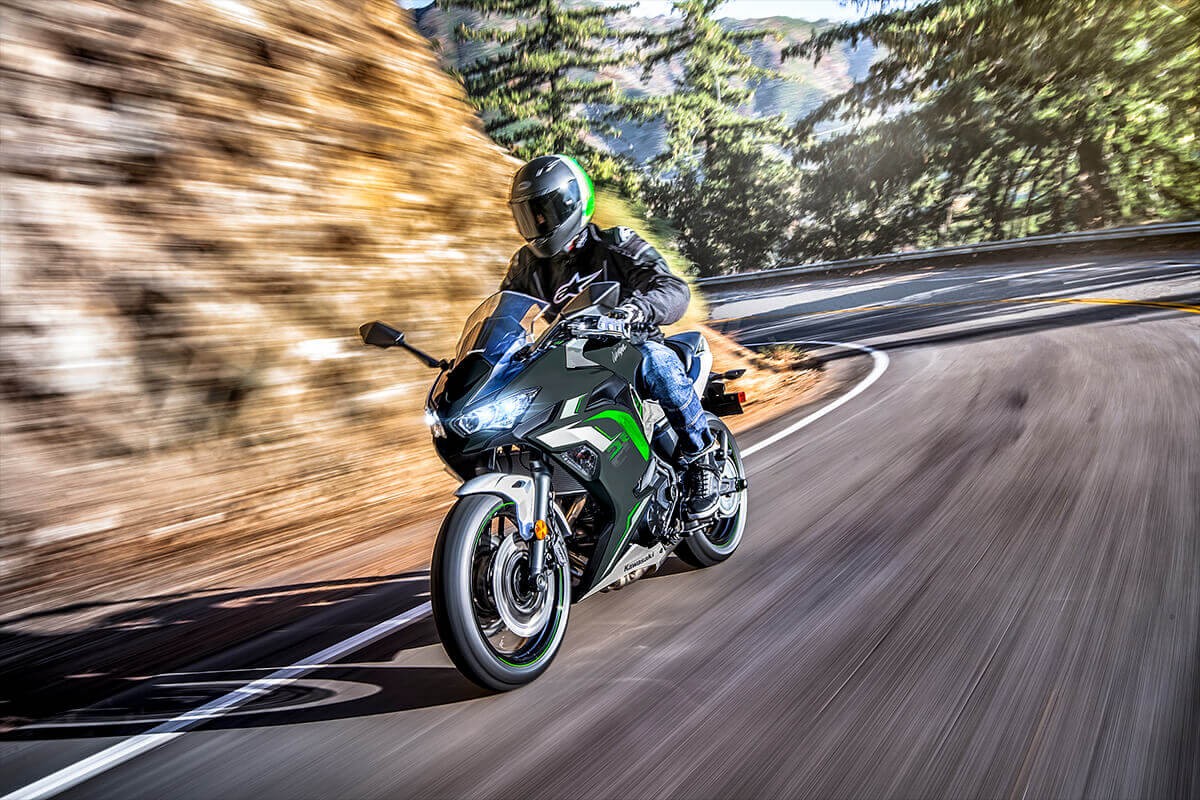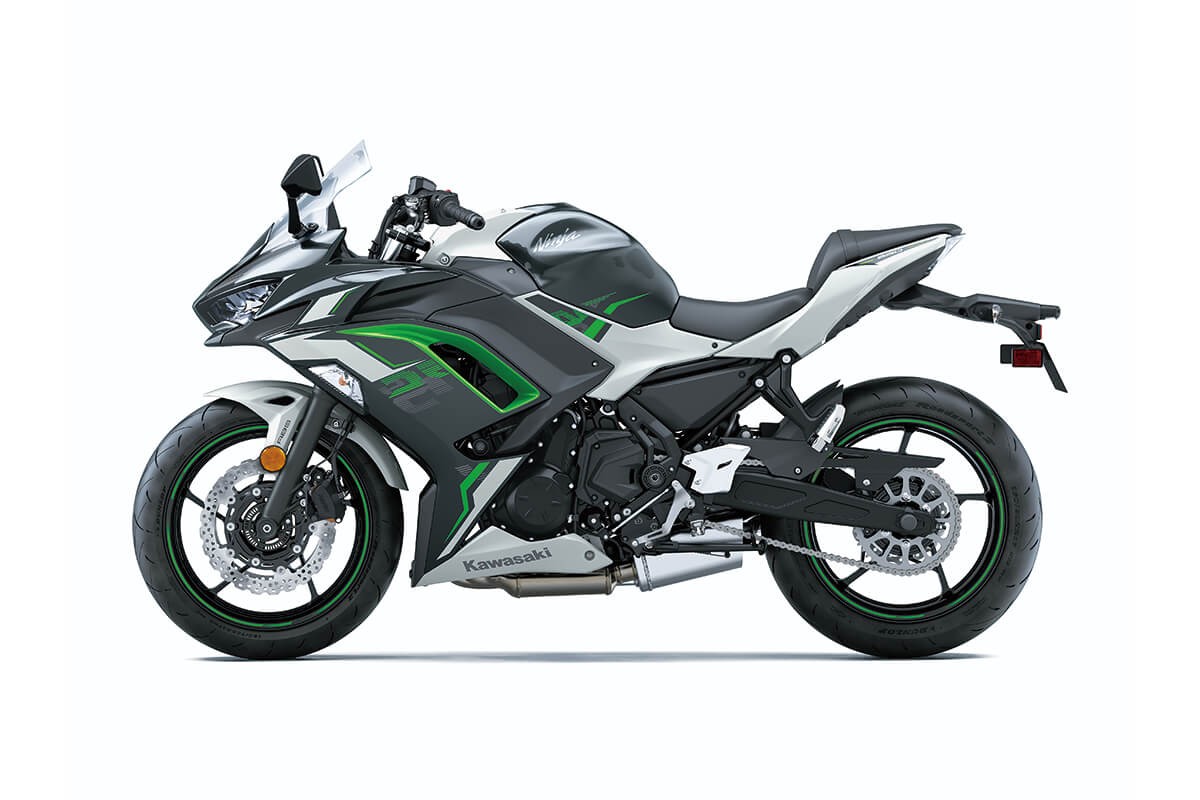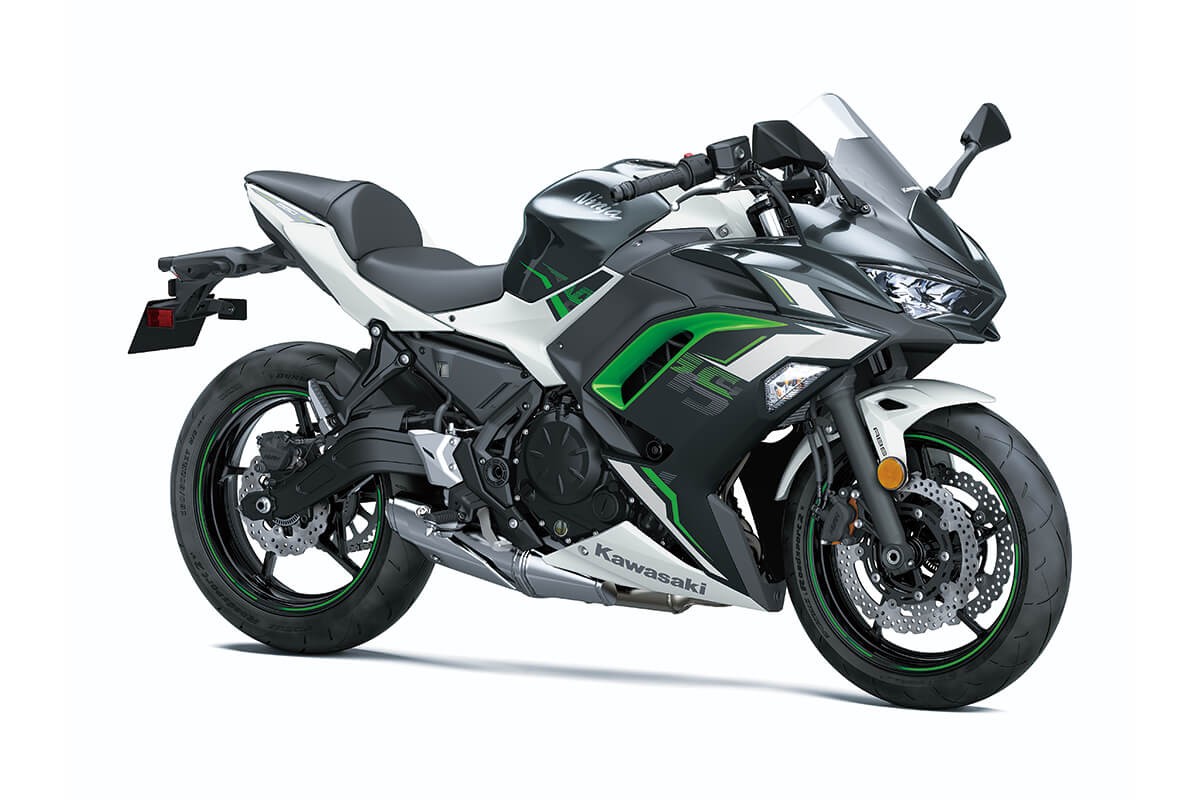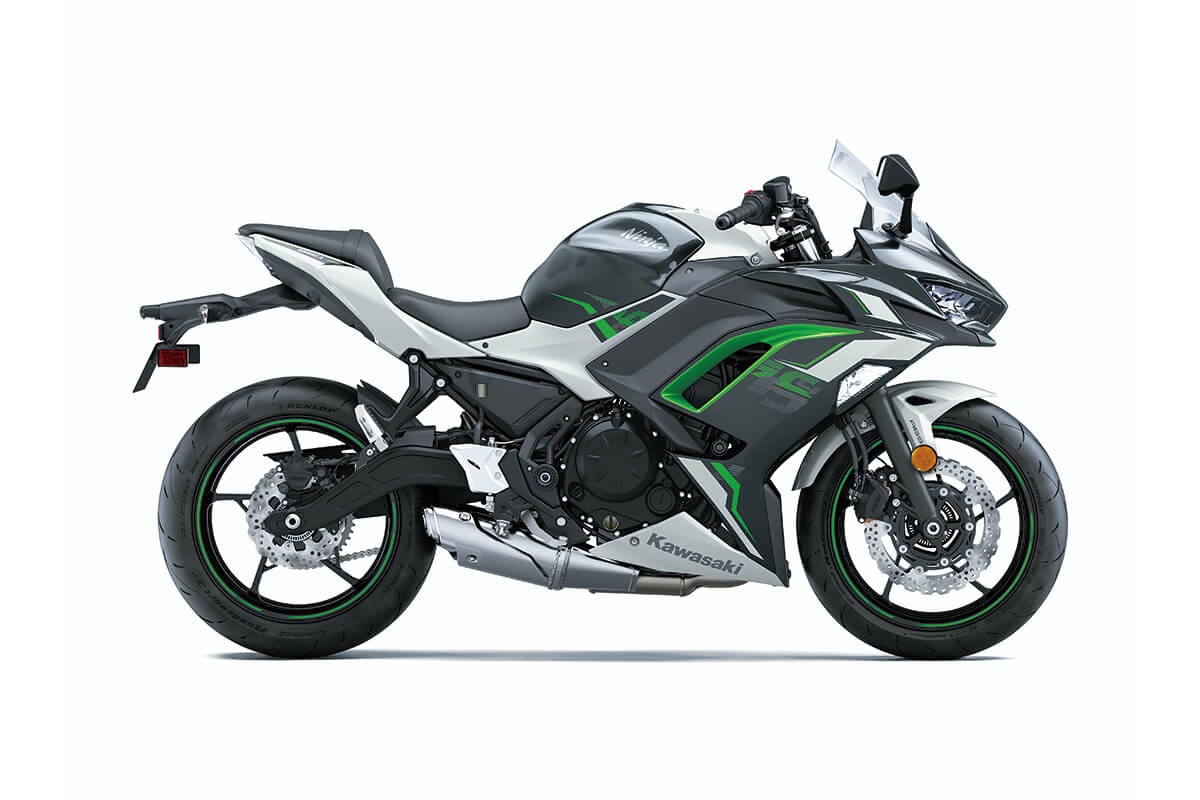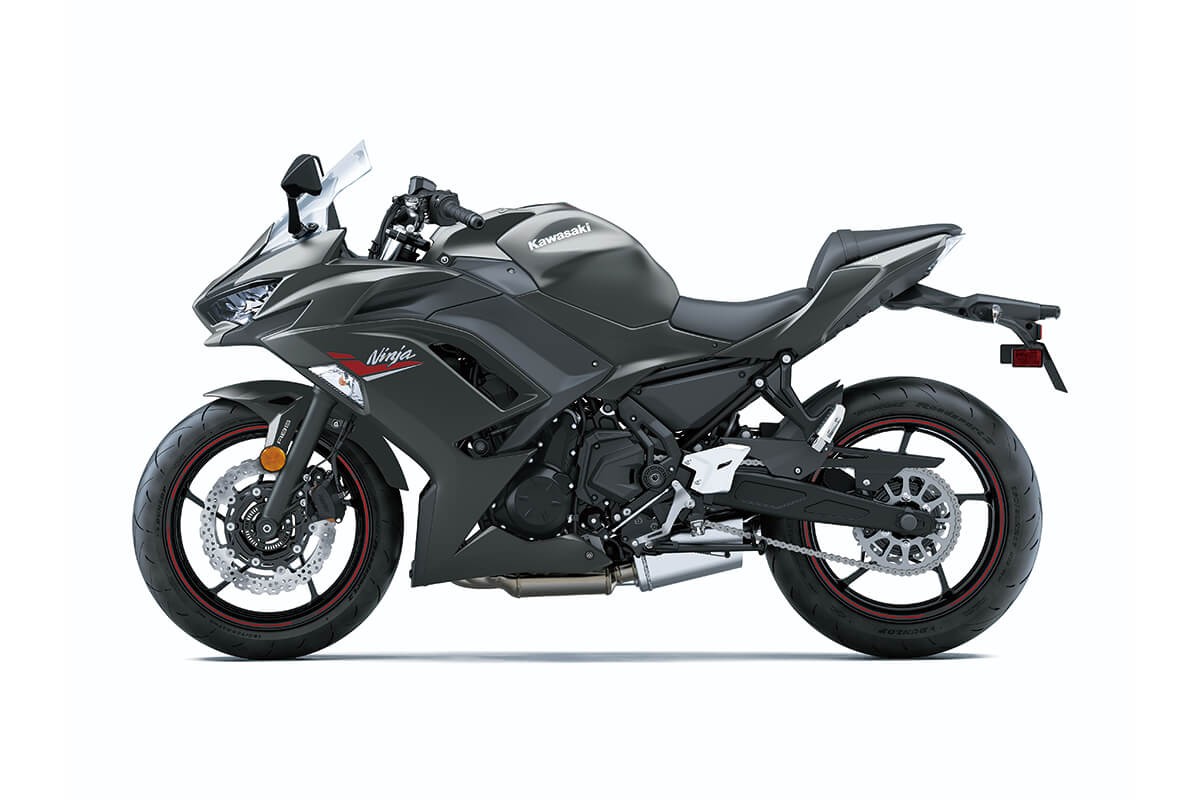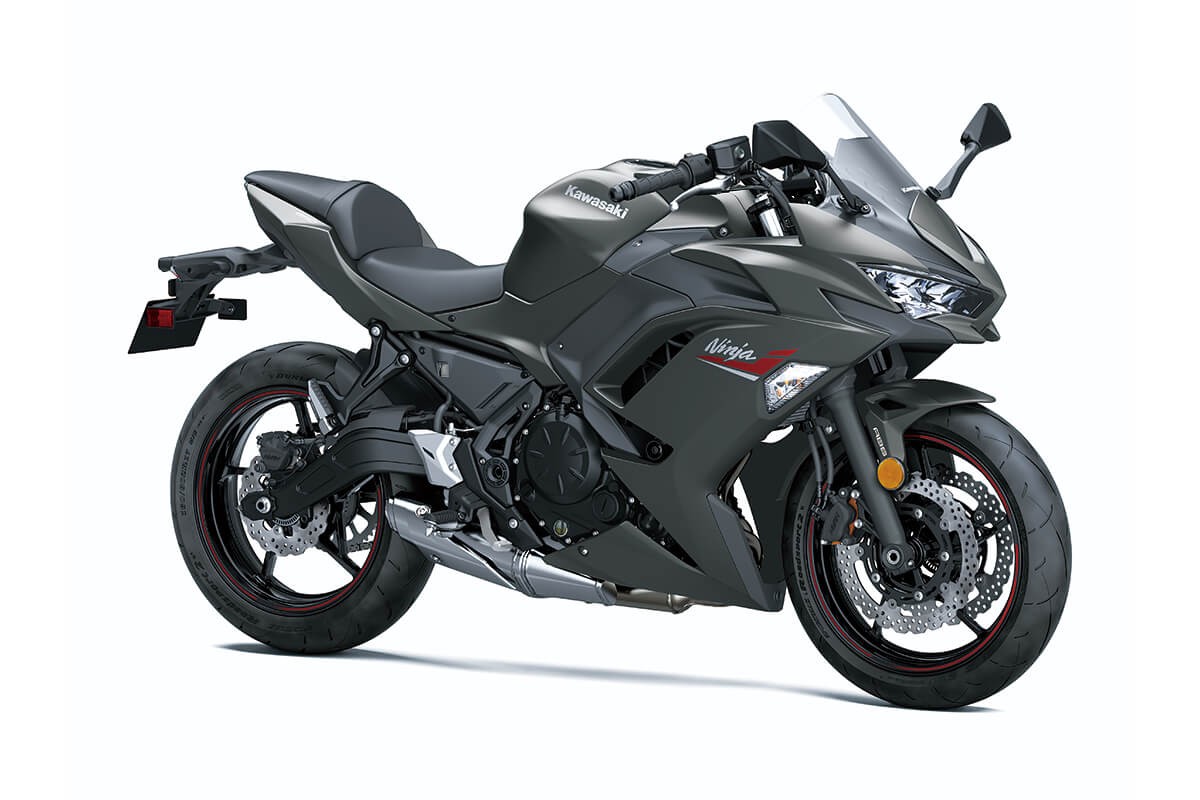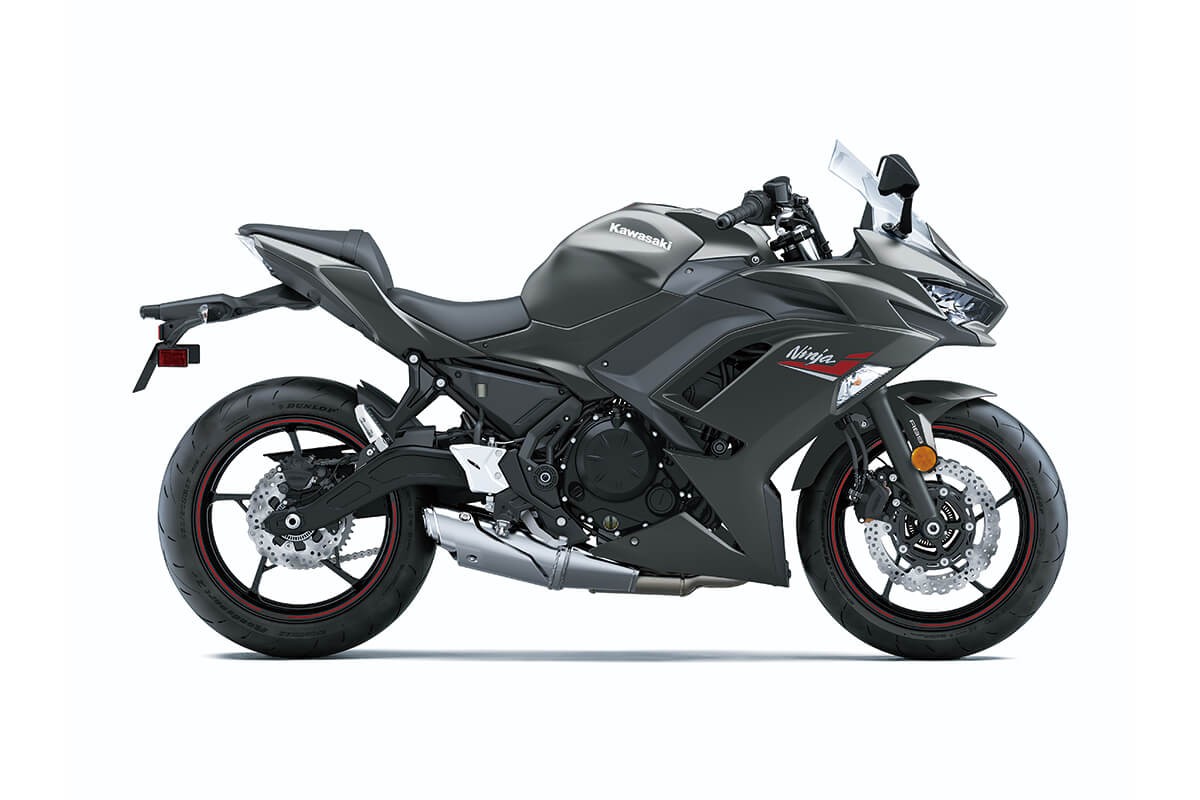The 2022 Kawasaki Ninja 650: A Next Level Ninja for the Initiated
Contents
Looking for something a bit more aggressive than Kawasaki’s entry-level Ninja 400, but not ready to tackle a liter bike just yet? That’s what the Ninja 650 ABS is for—it’s big on thrills, but not so big that it’ll get away from you too easily if you’ve only been riding for a few seasons. And truth be told, there are many more experienced riders out there who simply like the way this mid-size sport bike feels and handles. It’s a Kawasaki, after all.
The big Japanese bike brands are all pros, especially when it comes to making sport bikes, so it shouldn’t surprise you to learn that this year’s Ninja 650 ABS is an extremely well-balanced offering. It’s also pretty much exactly the same as last year’s Ninja 650—although the colors have been updated to Metallic Graphite/Graphene Steel Gray and Pearl Robotic White/Metallic Carbon Gray.
The engine’s still a digitally fuel-injected 649cc parallel twin that spits out 67 hp @ 8,000 rpm and 47 lb-ft of torque at 6,700 rpm. It still has an assist & slipper clutch (just like the Ninja 400), an economical riding indicator, and ABS. Unlike its smaller sibling, the 650 offers smartphone connectivity via Bluetooth—but these were all on last year’s model as well. And like that version, you can also pay an extra $200 to get the bike with distinctive KRT graphics.
Seriously, though—if it ain’t broke, why fix it? The 2022 Ninja 650 is still a truly excellent all-rounder when it comes to mid-size sport bikes, and it certainly offers enough “oomph” to hang with rivals like the Honda CBR650R or Yamaha MT-07—earning it a well-deserved spot in the 2022 Kawasaki Motorcycle Lineup.
The 2022 Kawasaki Ninja 650 ABS starts at $8,299 USD / $9,299 CAD. It’s also available in the US without ABS for $7,899 USD.
On this page: we’ve curated specs, features, news, photos/videos, etc. so you can read up on the new 2022 Kawasaki Ninja 650 ABS in one place.
Model Overview
General Info
- Price: $8,299 USD / $9,299 CAD
- Key Features:
- Assist & slipper clutch
- Economical riding indicator
- Bluetooth smartphone connectivity
- Horizontal back-link rear suspension
Main Specs
- Engine: digitally fuel-injected 649cc parallel twin
- Power: 67 hp @ 8,000 rpm
- Torque: 47 lb-ft of torque at 6,700 rpm
- Dry Weight: 423 lbs (192kg)
- Seat Height: 31.1 inches (790 mm)
Competitors
2022 Kawasaki Ninja 650 Specifications
ENGINE |
|||
| Engine | 649cc, 4-stroke, Parallel Twin, DOHC, 8-valve, liquid cooled | ||
| Power | 67 hp | ||
| Bore x Stroke | 83.0 x 60.0mm | ||
| Compression Ratio |
10.8:1
|
||
| Fuel System | DFI® with dual 36mm Keihin throttle bodies | ||
| Starter | Electric | ||
| Lubrication | |||
DRIVETRAIN |
|||
| Clutch | |||
| Transmission | 6-speed | ||
| Final Drive | Sealed chain | ||
CHASSIS |
|||
| Suspension Front | 41mm hydraulic telescopic fork/4.9 in | ||
| Suspension Rear | Horizontal back-link with adjustable spring preload/5.1 in | ||
| Brakes Front | Dual 300mm petal-type discs and 2-piston calipers and ABS | ||
| Brakes Rear |
Single 220mm petal-type disc and single-piston caliper and ABS
|
||
| Tires Front |
|
||
| Tires Rear | 160/60×17 | ||
| Fuel Tank Capacity | 4.0 gal | ||
| Color |
Metallic Matte Graphenesteel Gray, Pearl Robotic White/Metallic Carbon Gray
|
||
ELECTRICAL |
|||
| Ignition | TCBI with electronic advance | ||
| Spark Plugs | |||
| Headlight | LED | ||
| Tail Light | LED | ||
DIMENSIONS |
|||
| Overall Length | 80.9 in | ||
| Overall Width | 29.1 in | ||
| Overall Height | 45.1 in | ||
| Wheelbase | 55.5 in | ||
| Ground Clearance | 5.1 in | ||
| Seat Height | 31.1 in | ||
| Curb Weight | 423.4lb* | ||
WARRANTY |
|||
| Warranty | 12 Months | ||
| Kawasaki Protection Plus | 12, 24, or 36 months | ||
2022 Kawasaki Ninja 650 Features
Assist & Slipper Clutch
Under normal operation, the assist cam functions as a self-servo mechanism, pulling the clutch hub and operating plate together to compress the clutch plates. This allows the total clutch spring load to be reduced, resulting in a lighter clutch lever feel when operating the clutch.
When excessive engine braking occurs – as a result of quick downshifts (or an accidental downshift) – the slipper cam comes into play, forcing the clutch hub and operating plate apart. This relieves pressure on the clutch plates to reduce back-torque and helps prevent the rear tire from hopping and skidding. This race-style function is particularly useful when sport or track riding.
Dual Throttle Valves
On models with dual throttle valves, there are two throttle valves per cylinder: in addition to the main valves, which are physically linked to the throttle grip and controlled by the rider, a second set of valves, opened and closed by the ECU, precisely regulates intake airflow to ensure a natural, linear response. With the air passing through the throttle bodies becoming smoother, combustion efficiency is improved and power is increased.
Economical Riding Indicator
While effective vehicle speed and engine speed may vary by model, paying attention to conditions that cause the “ECO” mark to appear can help riders improve their fuel efficiency – a handy way to increase cruising range. Further, keeping fuel consumption low also helps minimize negative impact on the environment.
ABS (Anti-lock Brake System)
2022 Kawasaki Ninja 650 Photos
2022 Kawasaki Ninja 650 Videos
2022 Kawasaki Ninja 650 New Color Walkaround Review
2022 Kawasaki Ninja 650
Links
Kawasaki Official Websites


